How I (Sort of) Became a Pinball Wizard After Getting Tips From a Champion
A world-beating pinball player attempts to make me a master of the game.
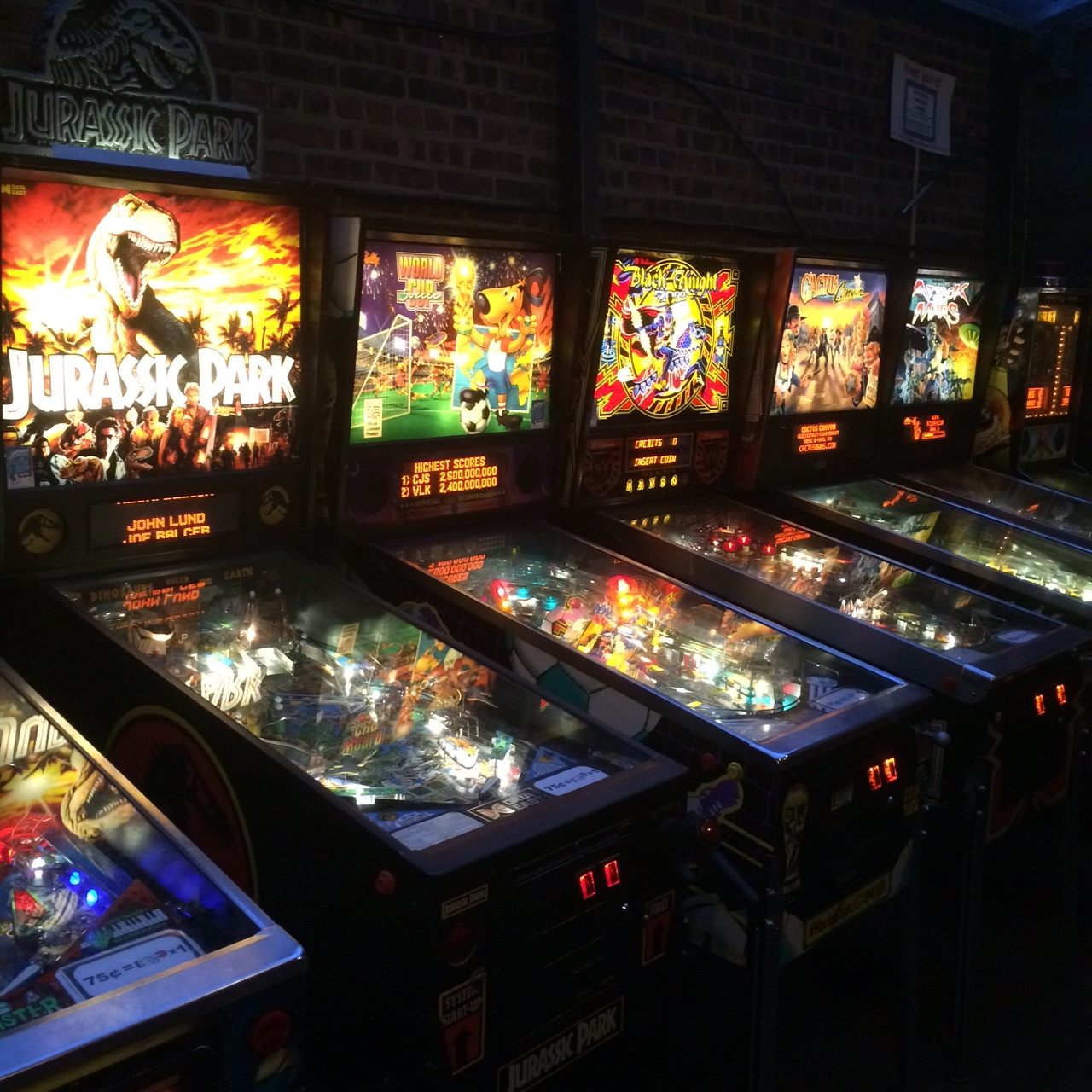
What does it take to become a pinball master? (All photos by Eric Grundhauser)

Pinball has been around since the 1930s, mixing bright lights, loud sounds, and a high level of dexterity to create one of the most enduring entertainments of all time. While the popularity of the game has waxed and waned down the decades from its pinnacle in the 1970s and ’80s, to a relative nadir in the early 2000s, there remain a devoted (and growing) number of pros who continue to be masters of pinball.

But what kind of skill and/or sorcery does it take to become a pinball wizard? How good could I get in, say, an afternoon? To find out, I met up with world champion pinball player Bowen Kerins, who has been playing competitively for 23 years and took out the Professional and Amateur Pinball Association world championship in 1994, 2005, and 2013.
Every pinball machine is different, but Kerins gave me a few general tips on how to become a better player. The first: pay attention to where you want the ball to go. Most players, when they step up to a game of pinball, focus almost entirely on not losing their ball. But as Kerins sagely advises, that’s an exercise in futility: “You will lose the ball. Everyone will lose the ball, every time.”
By focusing on something you want to hit instead, you end up actively seeking higher scores instead of just letting it happen. In addition, you will have a better chance of triggering some cool effect—depending on the machine.
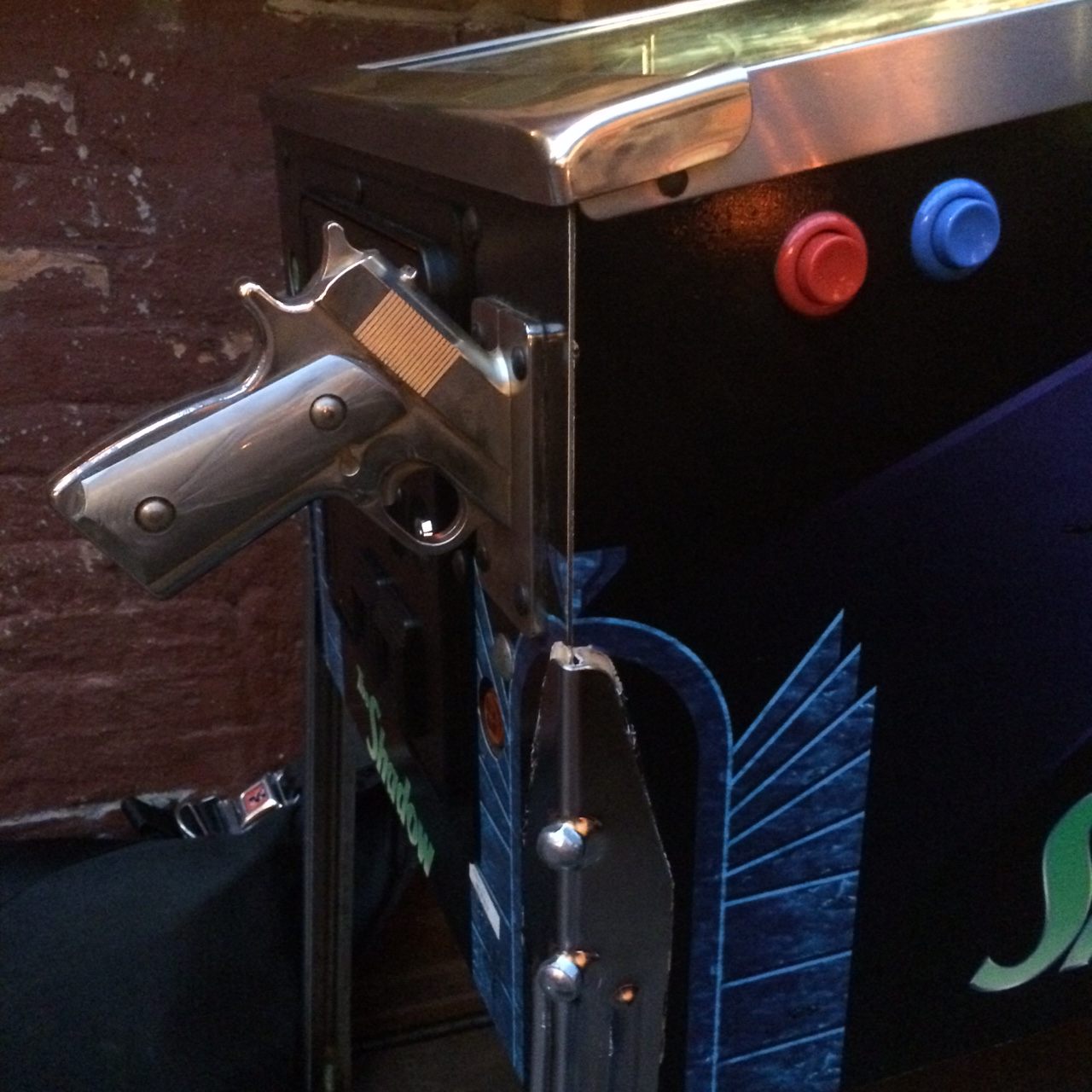
The flipper buttons, and gun-shaped plunger on The Shadow pinball machine.
In terms of flipper control, Kerins suggested learning how to “catch” the ball. This entails bringing it to a stop in the crux of an upturned flipper. Then, says Kerins,“you can pause, you can figure out your timing, and then make a decision.” A more advanced option for better shot-targeting is to transfer the ball from one flipper to another, using them as little ramps.
At that deadly moment in any game when the ball is shooting straight down the center, most players just start jamming on both flippers. This is not the best approach. “You can actually lose track of the ball in the in-between,” says Kerins. “Sometimes you can actually hit the ball up into the other flipper that happens to still be up. Then you bonk out.”
The key to avoiding this is to never hit both flippers at the same time, always keeping at least one up. There is also a more extreme maneuver called a “slap save,” that involves hitting the flipper button so hard that you nudge the game, moving the ball towards the flipper. Surprisingly, this is a tournament legal move. “In my opinion, in a tournament, if the ball goes down the middle, there is almost always something you could have done about it,” says Kerins.
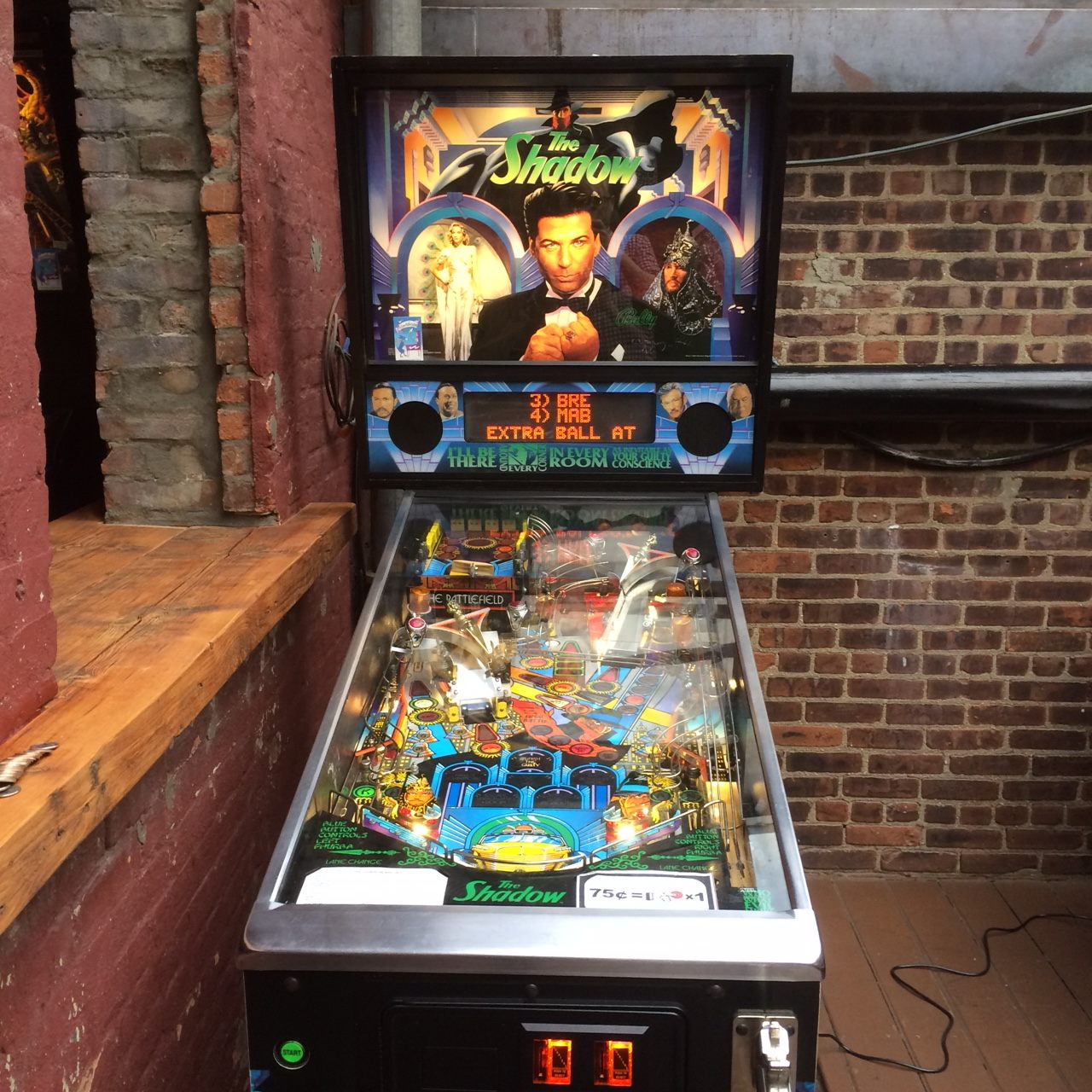
There’s a lot going on in a pinball game, you gotta stay sharp.
One last tip: Pay attention to the machine. “The game wants to tell you what to do through its effects,” says Kerins. “If lights are flashing, it usually means something good will happen by shooting that shot.” Sometimes more tantalizing shots are more risky, but they are almost always worth higher points.
With these tips given, Kerins and I went to Brooklyn pinball mecca Sunshine Laundromat to test my new (theoretical) skills. We opted to focus on Kerins’ favorite machine, the pinball game based on the 1994 Alec Baldwin pulp movie The Shadow. The game is notable for its two dagger-shaped (technically, phurba-shaped) lane-splitters at the top of the two major ramps. These can be turned from side to side using extra buttons below the flipper buttons, directing the ball down one of two lanes on each ramp. “It’s really hard,” says Kerins. “The shots are fast and tight, and there aren’t very many ways to save a ball once it’s out of control. A lot of people die very quickly on it.” Sounds like the perfect testing ground.
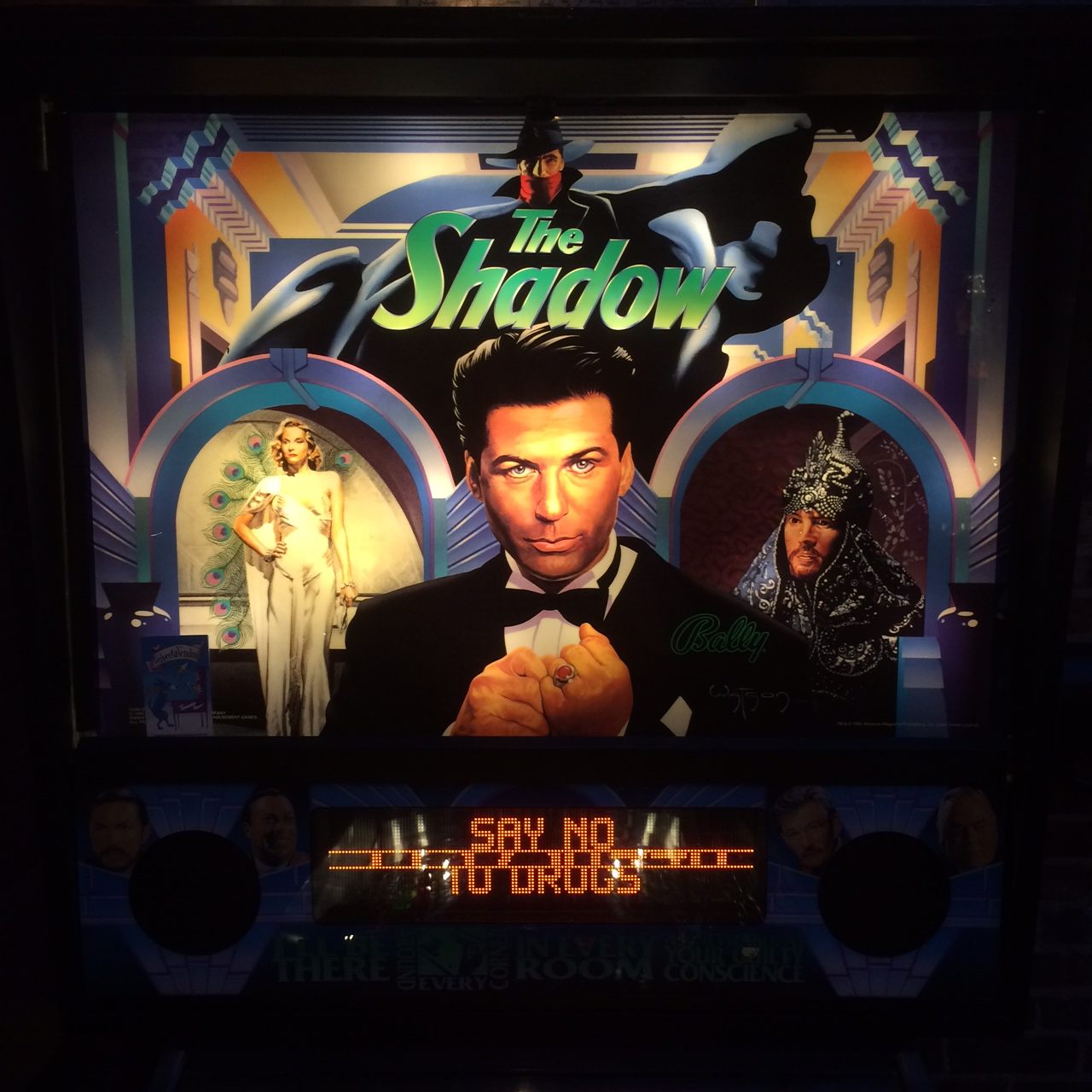
The Shadow knows… how to be a hard pinball game.
As luck would have it, Kerins himself had played on Sunshine’s Shadow machine just weeks earlier, racking up a confidence-destroying score of three BILLION points. That’s a hard number to beat, but Kerins gave me some more realistic goals. “A 300-400 million score is satisfying,” he says. “The usual high score on Shadow is 750 million. That’s hard to get. It’s very hard to get that.” Okay, 750 million points it is.
To get a sense of my baseline skills, I played a few games in my normal pre-training style, frantically trying my damnedest to keep from losing the ball as it flew around the field. I managed to eke out scores in the 40 million range, with one exceptional game landing me over 116 million points, as I randomly activated “scenes” from the movie, like the “The Beryllium Sphere” and “Escape Underwater Doom.”
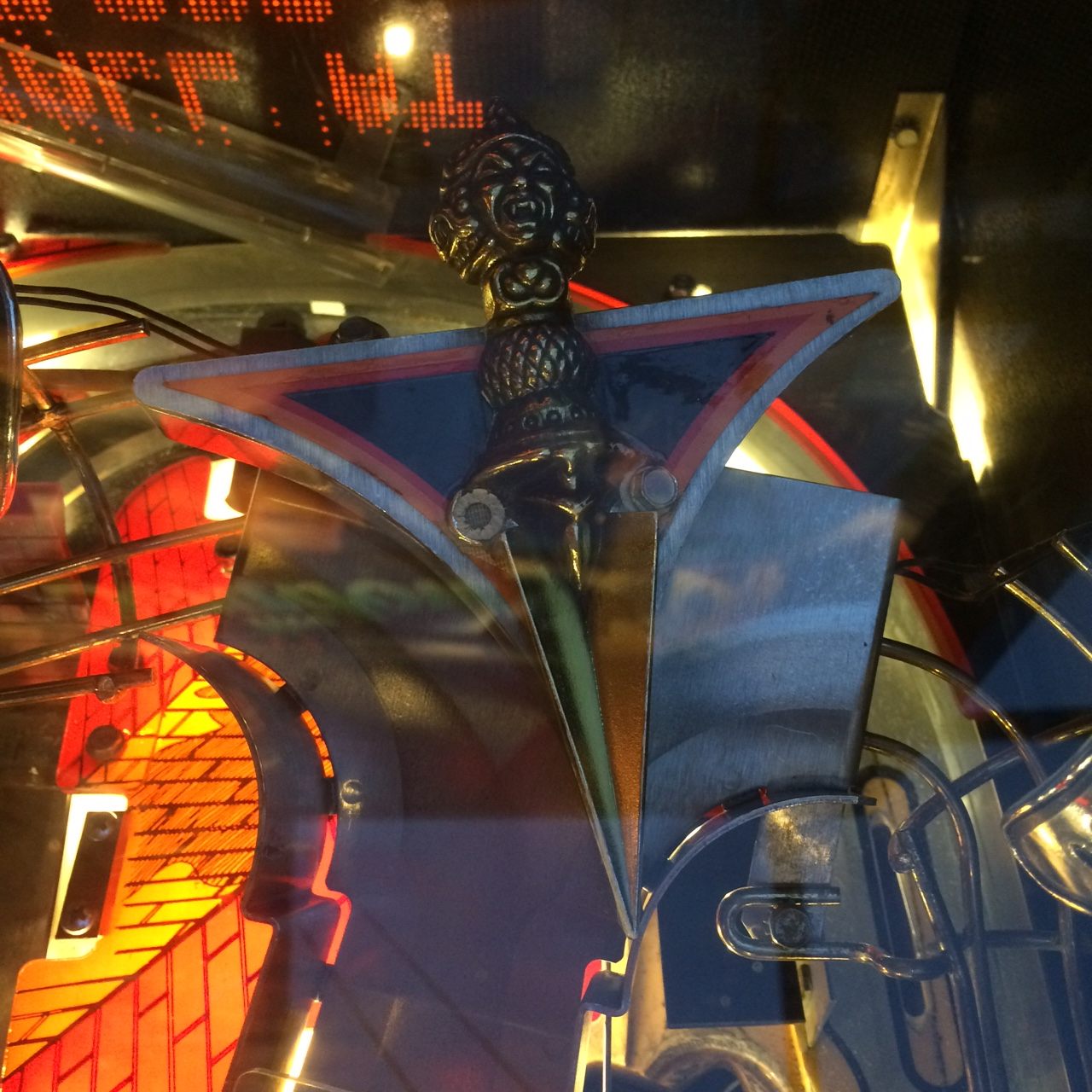
The phurba lane changer.
As with many other games of pinball, I was quickly overwhelmed, having trouble dividing my attention between the signals on the field, the directions in the score box, and the various shouts and quotes issuing from the machine. I kept shooting for the ramps, but it felt like the flippers were a bit weak, and the ball would almost make it up the ramp, before rolling back down, and straight into the ball return. Given Kerins’ astronomical score on the very same machine, this was no excuse.
Time to try out some of my new skills. I quickly became adept at hitting the ramp closer to the flippers for a quick 10 million points, but hitting the more distant ramp was a challenge, despite my patient approach. In the meantime, I accidentally got better at getting the ball in all of the bonus areas around it. Unfortunately these peripheral benefits were not enough to overcome the sheer number of times the ball would roll back down the back ramp and right between the flippers. I tried a slap save, but the game immediately gave me a tilt warning. “You still think you can control the game with brute force?” an electronic villain asked me. I guess not.
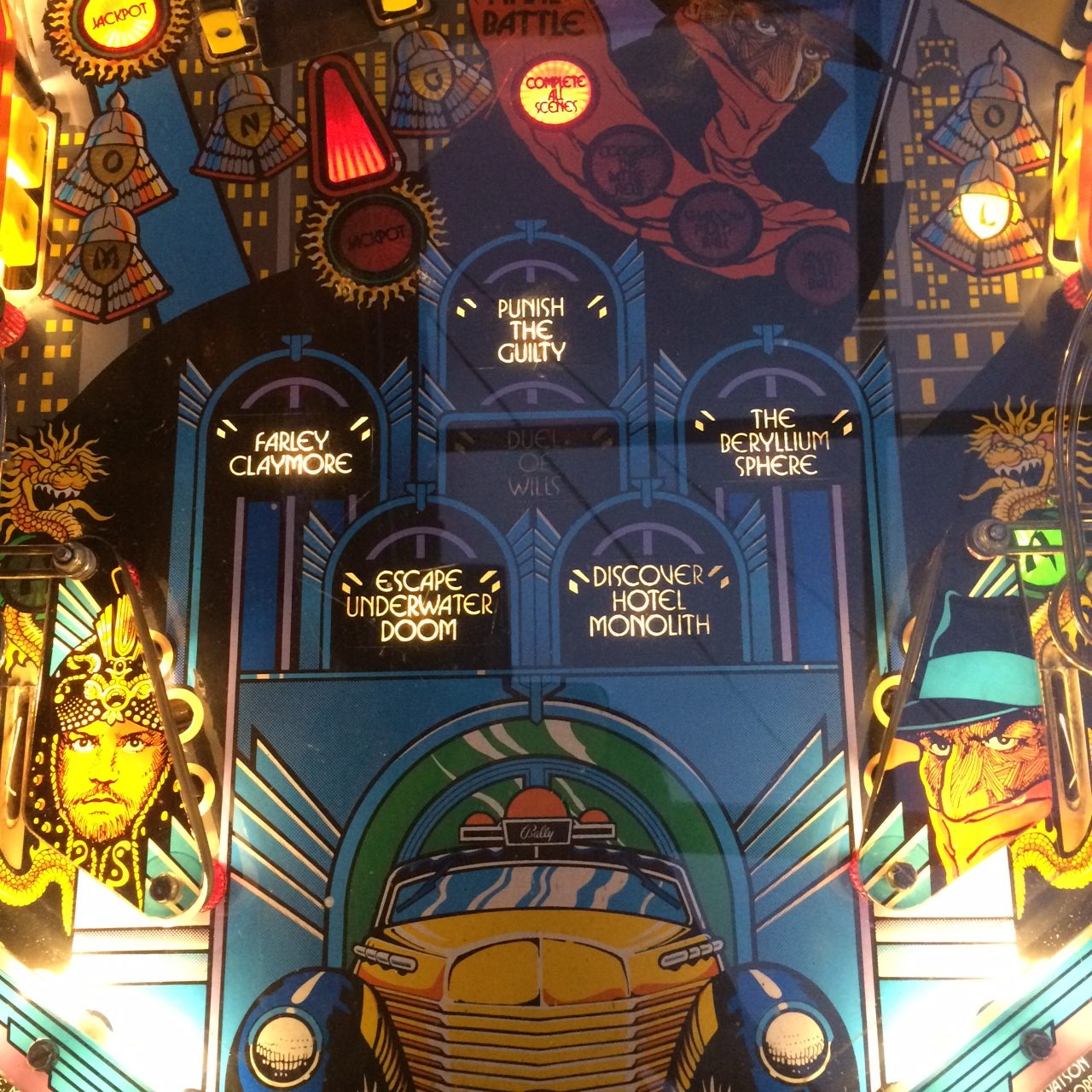
The scenes available in the play field.
Focusing so closely on my technique and not the game itself, my scores tanked. I couldn’t seem to crack 30 million points. Yikes.
After a short break, I came back, this time trying to internalize Kerins’ tips and also focus on the game. Very zen. Amazingly, this approach worked. I began focusing on The Battlefield, which was located in a tricky corner in the left of the field that I had become pretty good at hitting. Once the ball is in The Battlefield, it needs to bounce off 30 bumpers, then sink down the back of the box using nothing but the sliding panel bumper. If you can pull this off, it’ll earn you 50 million points.
Focusing on getting the ball up there and earning that first 50 million paid off. I was catching the ball and sending it right where I needed it, and keeping calm when it looked like the ball was going to be lost down the middle. Within a couple of games I was earning well above 100 million points each time. Still a far cry from a huge score, but a marked improvement.
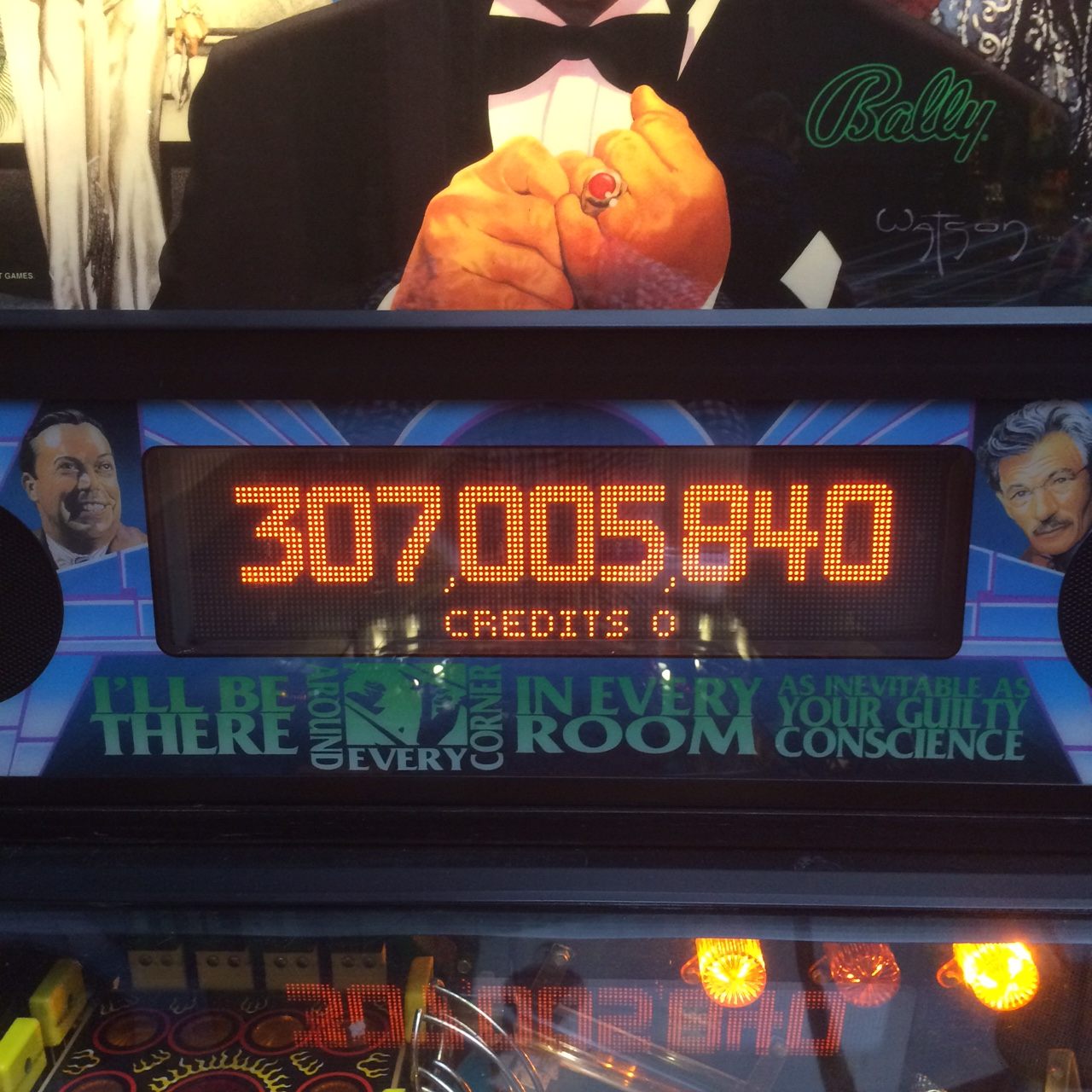
A… satisfying score.
My high score came at about game 17: 307,005,840 points. Through a combination of winning The Battlefield, earning a multi ball round, and hitting the top loop, I managed to stay alive for a game that felt like it was firing on all cylinders. I finally understood the table and had the skills to make it work for me. I was The Shadow’s worst nightmare. Until I lost the ball for the final time off the back ramp. Dammit.
After another dozen games, I wasn’t able to beat, or even fathom, Kerins’ high score. Or even The Shadow’s general high score. But I did improve immensely using Kerins’ tips. My ultimate high score was, as he said, “satisfying.” As much as I wanted it to be true, becoming a pinball wizard isn’t something that’s possible in an afternoon. But, as Kerins says: “Keep shooting ramps, and good things will happen.”
Try The Shadow for yourself at Sunshine Laundromat on Obscura Day. The Greenpoint, Brooklyn venue will be open for breakfast, pinball, and Saturday morning cartoons on April 16.


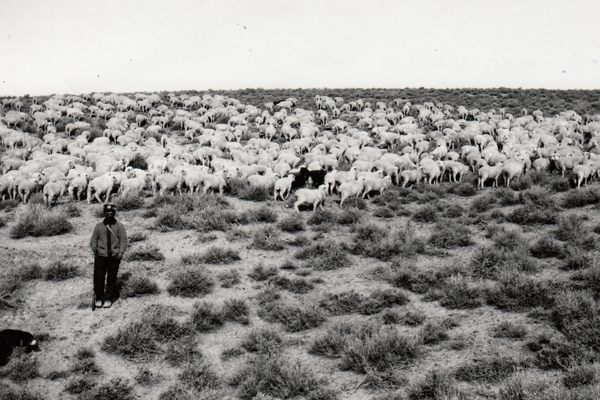



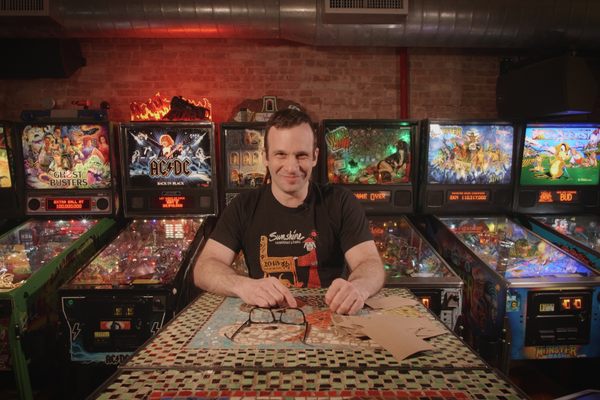


Follow us on Twitter to get the latest on the world's hidden wonders.
Like us on Facebook to get the latest on the world's hidden wonders.
Follow us on Twitter Like us on Facebook